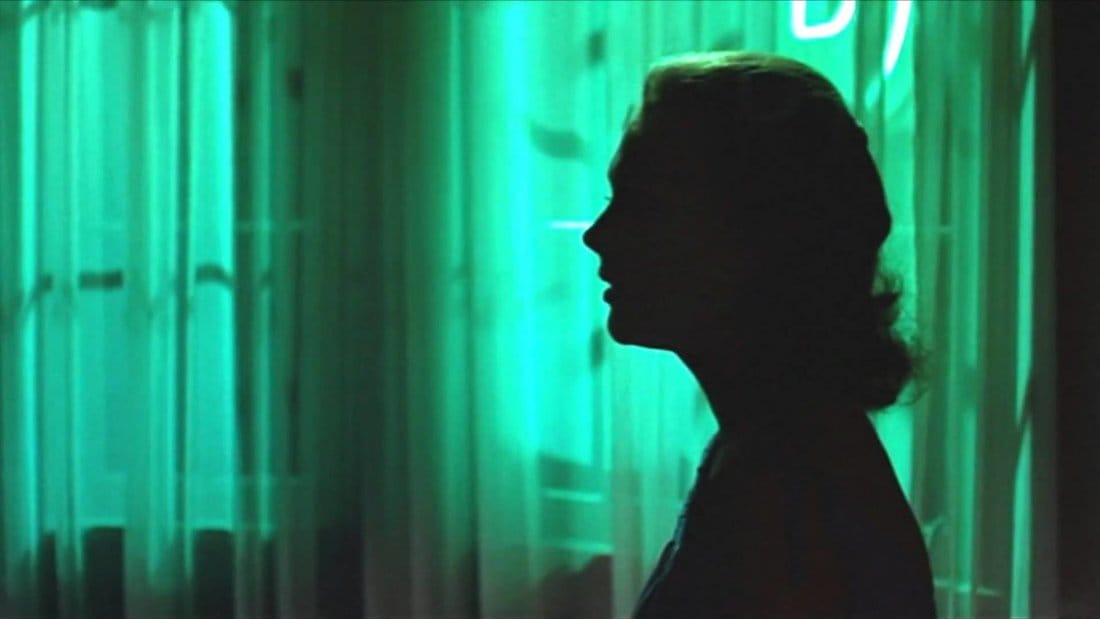
Indulge me in a little demonstration: think about the Mission: Impossible movies. Maybe you’re a fan of the series and have strong feelings about them. If so, there are probably a handful of scenes and images that immediately come to mind. But even if you’ve never seen any of the films, you probably still have a strong idea of what the series is. Okay, now here’s the challenge: can you describe the plot of any of the Mission: Impossible films? Don’t look it up, just see if right now, off the top of your head, you can remember what the actual sequence of events in any of these movies was. I’m guessing that even if you’re a regular watcher of the series, you can’t do it. But even if you have a good memory like me and could recall details like the NOC list, the Rabbit’s Foot, or the two halves of the key to the source code of the evil AI that’s in a sunken nuclear submarine, I am positive that you had to do some mental digging to remember them. None of those things were what first came to mind when I brought up Mission: Impossible. But here’s the thing: it doesn’t matter. Mission: Impossible is one of the most successful and acclaimed action movie franchises ever, even though nobody remembers what any of the movies are about. This is actually by design. When Christopher McQuarrie, who has written and directed the last three Mission: Impossible films along with the next (and final?) installment coming in May, sets out to write one of these films, he starts by discussing with Tom Cruise the various stunts and locations they want to be in the film. Cruise says, “I want to hang off the side of an airplane.” McQuarrie says, “I want to crash a train.” Then McQuarrie reverse-engineers the plot of the film around the predetermined set of action scenes. That’s part of why these movies work: they’re designed around the stunts and spectacle because the stunts and spectacle are the core of the movies. The plots are forgettable, but that’s fine, because the plot does not matter.
In our current media age, plot is king, at least as far as popular consciousness is concerned. Among the masses, plot tends to be the most scrutinized part of any piece of media, and also what people mostly beat up on when they don’t like something. The most frequent criticisms I hear for movies and shows people don’t like: too many plot holes, the plot made no sense, the plot was too far-fetched, etc. I had a friend who would react to any unexpected or unwelcome occurrence in her life by telling herself that it was “good for the plot.” There’s a well-worn joke across the internet than whenever a movie or show has a lot of nudity or other sexually arousing material, people say they “watch it for the plot,” the latent implication being that watching something “for the plot” is the standard, correct way to watch it in opposition to watching for reasons of horniness. But the truth is that nobody really watches anything for the plot. Among all the narrative and formal aspects that make up a film or TV show – characters, setting, pacing, themes, tone, mise-en-scène, cinematography, editing, sound – plot is almost always the least important. Plot is not a film’s marquee feature; it is a scaffold there to support the things that are actually important, and its undue prevalence in contemporary discourse is part of a worrying trend of reducing art to the purely intellectual.
What Plot Is
To answer this question in a trivial sense, we need a working definition of plot. The one I am using is this: plot is the sequence of events that occurs in any film (or book, play, game, etc.) from beginning to end. If you watch a film and take down a transcript of everything that happens on screen, that is its plot. So for example (spoilers for the films about to be mentioned, by the way), the plot of Star Wars is that a farmboy gets his hands on the blueprints for the evil empire’s big weapon, goes on an adventure to get those blueprints to the rebellion, then joins the rebellion and blows up the big weapon. The plot of 12 Angry Men is that the sole juror to initially vote not guilty in a murder case where a guilty verdict guarantees a death sentence gradually convinces all the other jurors to change their vote by calling into question each piece of the prosecution’s evidence. The plot of Vertigo is that a detective falls in love with a woman he was hired to protect but can’t save her from suicide, then meets another woman who he tries to make just like her to somehow redeem himself, then finds out she is actually the woman he fell in love with and that her supposed death was actually an elaborate scheme by his client to murder his wife, but then he ends up accidentally killing her for real.
The more substantive question of what plot is, though, concerns its function, its role within the broader operations of a work. Plot is logistics. It is the tedious brunt work of storytelling, the potato-peeling phase of making a film’s goulash. It is crude and unglamorous. Plot is there because most films aim to tell stories, and in order to tell a story you generally need to have things happen. Stories tend to work best when they have conflict, and so you need something for there to be conflict over. Characters need to react to events and make decisions, and so you need to have events to react to and decisions they can make. Plot is what provides these raw materials for the characters and story to work with, it is what gets everything situated where it needs to be. You have a scene where Tom Cruise drives a motorcycle off a cliff and you need to make it fit in the film? You use your plot to cook up a scenario where he has to get onto a moving train and this is the only way to do it. What the actual plot material is doesn’t matter, all that matters is that it works to make the thing you need fit.
Plot also serves as a scaffold for a film, a way to create a basic structure to fall back on. Inevitably, your film is going to begin and end somewhere, so it helps to have a framework that gives you a place to start from and a place to arrive. It also helps ensure that you don’t get too carried away exploring one particular thing or meander so far away from where you began that you forget what you were doing in the first place. Plot is there to give you a clear direction to travel and to make sure that everything keeps moving along smoothly. It is like a set of bumpers at a bowling alley. Plot’s fundamental function is as a support system. It is there to suggest a sense of direction and manipulate all of your elements into the configuration you need them to be in at a particular point in time. It can be a useful tool, but it is always an instrumental tool, there not as a main attraction, but to help the elements that actually matter shine through.
What Plot Isn’t (aka What Actually Matters)
Look again at those plot descriptions for Star Wars, 12 Angry Men, and Vertigo. If you’ve seen those films, you’ll know that those plots are pretty flat descriptions of their respective movies. They’re technically correct, but none of them really get to the core of what those movies are. The Death Star plans are hardly a central aspect of Star Wars, the heart of the film is really its being a modern myth, a Campbellian journey of an ordinary person venturing out from their ordinary world to become a hero, a part of something larger than themselves. 12 Angry Men is about bias and prejudice, about how people bring their own emotional baggage into situations where they are supposed to be impartial, and about the viability of a justice system that relies on a fallible individuals. Vertigo is about obsession, and how it can completely skew a person’s practical and moral judgment, and how we so often create our own images of who those close to us are supposed to be rather than accepting them as they are. None of these aspects of the films are covered by a mere plot description.
These better accounts of these three films are not descriptions of their plots but of their stories. The story-plot distinction ought to be familiar to those who have made it through high school English, but to reiterate it: plot is just what happens, story is the broader narrative that encompasses what it means. Story is what we come for, not plot. Story is the level at which films and other media can move us, can provoke us, can lead us to some genuine discovery. Story is what a work is about at its deepest level, what it hopes to communicate. Plot is just a mechanism to help deliver a story, but on its own it is quite empty.
Another thing plot is not is style. It is amazing the frequency with which people forget that film is an audiovisual medium, that there is a reason we watch movies instead of just reading the scripts. Films do not directly deal in statements in ideas, they deal in sounds and images. Those are the very fabric of every single film, and the experience would be fundamentally different without them. Writing about Scottie’s obsession in Vertigo can point to an aspect of the film, but it is certainly no substitute for experiencing the way the film depicts it stylistically, for the overwhelming dreamy haziness of the scene where Judy emerges fully transformed into Madeleine, with its harsh green light, spinning camera, and blaring music. Films are communications of the human experience through images and sound, not equations meant to be balanced out. A film’s artistic value lies in its story and in its aesthetics. Plot cannot take their place, it can only act in their service.
Moving Beyond Plot
One might object to my argument to this point on the grounds that plot not being the end goal of a work of art does not mean that it does not matter. If it serves as the skeleton of a film, the foundation on which its most important aspects rest, then clearly it matters a great deal. Remove the foundation from the building and the whole thing collapses. Remove the skeleton from the body and you’re only left with a mush of organs that can’t do much of anything. Plot might not be sexy and it might not be the ultimate fruit we want our artworks to bear, but it still has an indispensable role in getting us there.
This post is for paying subscribers only
Subscribe now and have access to all our stories, enjoy exclusive content and stay up to date with constant updates.
Already a member? Sign in
